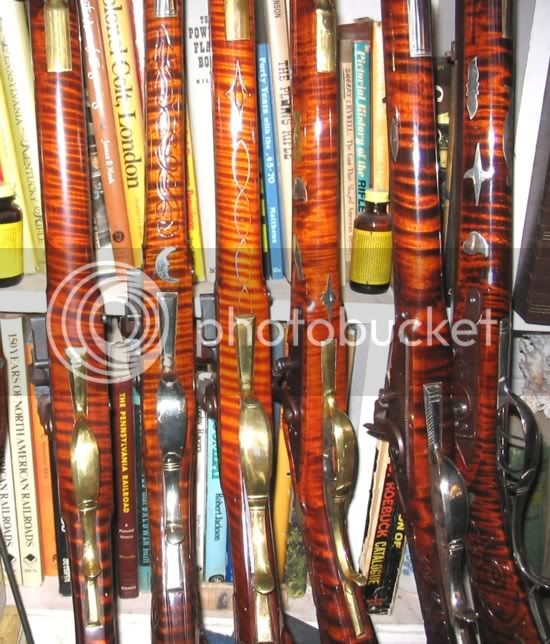I posted this many months ago in the Builders Bench forum under the title Lyewater and Wood.
I will repost it here to save you the trouble of looking it up, but be forwarned, there is real danger to your body with this.
Lye Water and Wood
#6642 - 01/16/04 08:19 PM
[Edit post] Edit [Reply to this post] Reply [Reply to this post] Quote
First off I'll say MuzzleLoader magazine published my story about this about 2 years ago but as it's my story I will go thru it here in new words so I'm not infringing on something.
For those of you who don't know what lye is I'll give you a quick lesson. The old timers got it by leaching wood ashes with water. It is a white crystalline material and can be found at some hardware stores in the plumbing section. It is used to open plugged drains. Don't use anything except pure lye for this proceedure.
It EATS skin, hair,grease and eyeballs! By eats I mean it DESOLVES them. It is a very strong caustic (or base). For that reason, if you try this you MUST wear eye protection, long sleeves and rubber gloves. It's also a good idea to have some vinegar (acid) handy to neutralize it if it gets on you. Interestingly it does not attack brass, German Silver or steel so your inlays can be installed in the stock and won't be affected by it.
I don't know that the old gunmaker masters used this method but it's been used for hundreds of years by woodrights so the masters must have known about it.
All wood has Tannin in it. It is what makes wood look brown. lye water has the ability extract tannin out of the wood cells and to "float" the tannin to the surface of the wood.
What this means to you is this: If you have wood with "figure" to it like curly Maple or Ash you can use this method to increase the contrast between the dark and the light figure of the wood.
The dark areas get darker and the light areas are mainly uneffected. No, this won't make what isn't there appear but it does increase the contrast.
This technique should be done after all of the sanding, burnishing and whiskering have been done and the stock is ready for the first coat of stain but no stain has been applied yet.
With all of your PROTECTION ON mix about 1 teaspoon of lye in a cup of cool water.
Using a narrow NYLON brush (any hair bristled brush will instantly be destroyed) paint the solution on the bare wood, totally covering all of the stock (and inlays if any) with a generous coating. Even if it runs, it won't hurt anything (unless it's alive that is).
At first it just looks like wet wood but as it drys it will start getting darker. No it doesn't change a lot but the dark places will get visibly darker while the light areas just turn a light tan.
While the wood is drying wash out the brush and kill the germs down the drain with the left over solution.
When the stock is DRY, paint it Once only with a coat of vinegar to nutralize the lye. Don't go over it again or you will dilute the contrast you worked so hard to get.
When it is again dry, it is ready for staining or whatever you have planned for it.
By the way, it also removes ALL of the oils your hands left on the wood so stains usually are more evenly absorbed by the wood during that process.
Because there is a limited amount of tannin in the wood, doing this process multiple times doesn't have any effect beyond redistributing the tannin thereby destroying your new work. What you get the first time is it but I think it is worth the trouble.
A word about Walnut: The process will also enhance walnut but if the wood is very dark it may make it so dark that the figure looses some of its contrast . If this happens then you will have to resand the darkness off and dewhisker again.
It does work very well.
Have fun.











